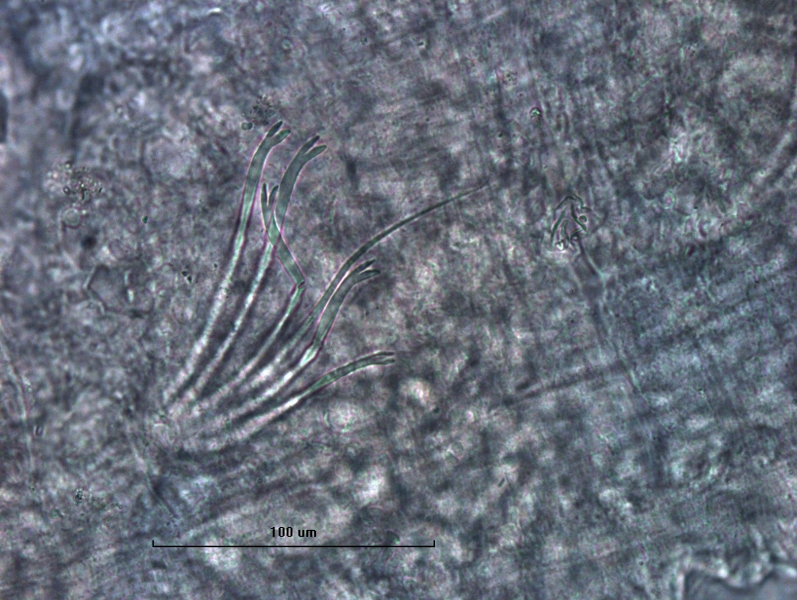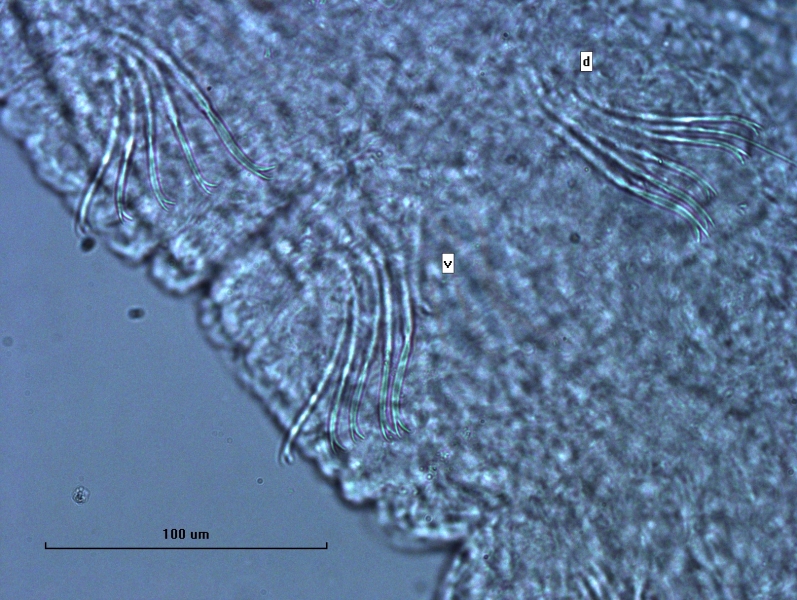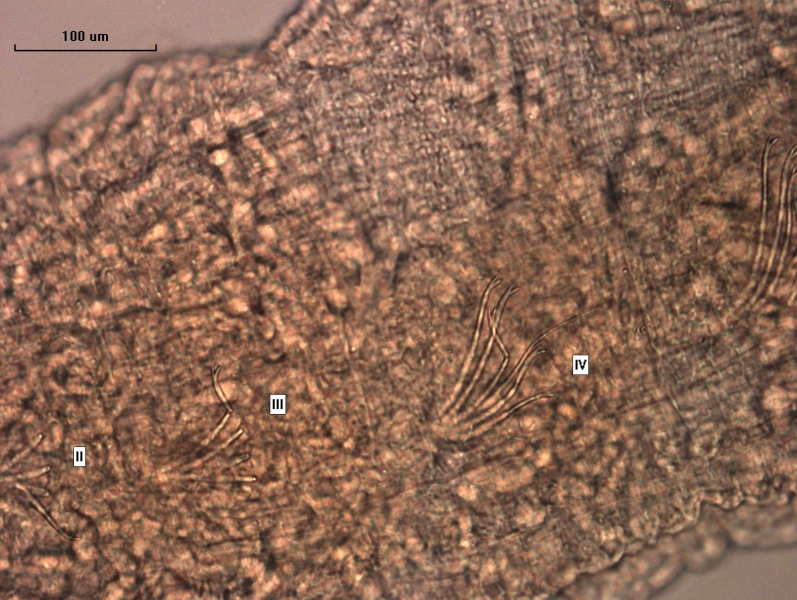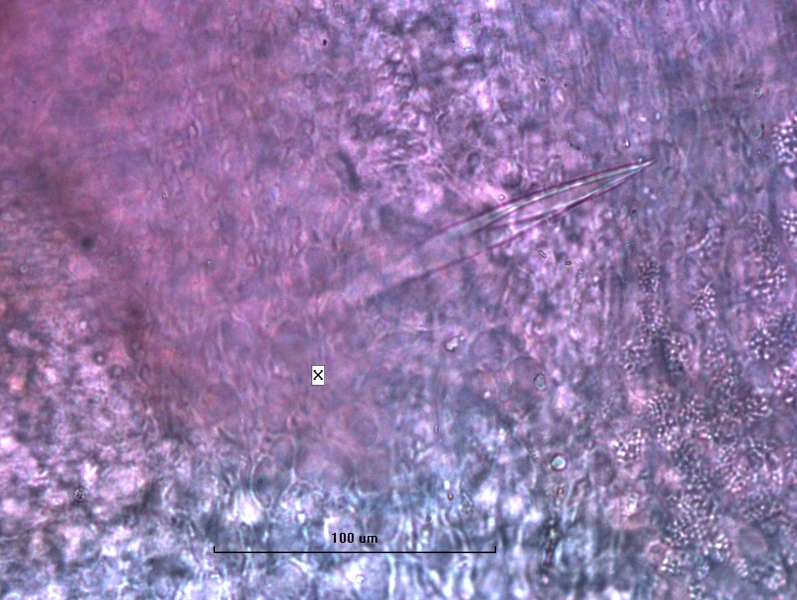Potamothrix vejdovskyi
Taxa description
Potamothrix vejdovskyi (Hrabě, 1941) is a freshwater oligochaete worm that is common and sometimes abundant in the Great Lakes. It is a tubificid worm that has dorsal hairs and bifid chaetae and bifid ventral chaetae beginning in II. When mature, it has spermathecal chaetae on X. The dorsal bundles have 2–4 short, bent hair chaetae with 4–6 bifid chaetae with rounded subequal teeth. The hair chaetae may be missing from the first few segments. There are up to 10 chaetae in ventral bundles that are similar to the dorsals. The spermathecal chaetae are large and long, with elongate teeth that form a trough-shaped distal end that is hollow, although the shape may vary with the degree of maturity. P. vejdovskyi is the only species of Potamothrix with bifid chaetae and hairs anteriorly, and the only tubificid in the region with rounded bifid teeth.
Distinguishing features
P. vejdovskyi is identified by bifid dorsal chaetae with rounded teeth, short bent hair chaetae, and spermathecal chaetae on X when mature.
Habitat
It is often found in mesotrophic habitats with Potamothrix moldaviensis.
Lake occurrence
Lakes Erie, Huron, Michigan, and Ontario.
Similar species
Unlike many other tubificids, P. vejdovskyi does not need to be mature in order to be identified because the bifid chaetae with rounded teeth are distinct and can often be found even in younger immature worms. If the chaetae do not appear very rounded, it may be confused with an immature tubificid with hair. The other Potamothrix species either lack hair chaetae or have hair chaetae with pectinate chaetae anteriorly.
Relative size
P. vejdovskyi is a large freshwater oligochaete.
Does it have a barcode reference from the Great Lakes?
Yes, this species does have a barcode reference from the Great Lakes.
References
Kathman, R.D., and R.O. Brinkhurst. 1998. Guide to Freshwater Oligochaetes of North America. pp. 150–153, 122.
Stimpson, K.S., D.J. Klemm, and J.K. Hiltunen. 1982. A Guide to the Freshwater Tubificidae (Annelida: Clitellata: Oligochaeta) of North America. pp. 18, 49.









